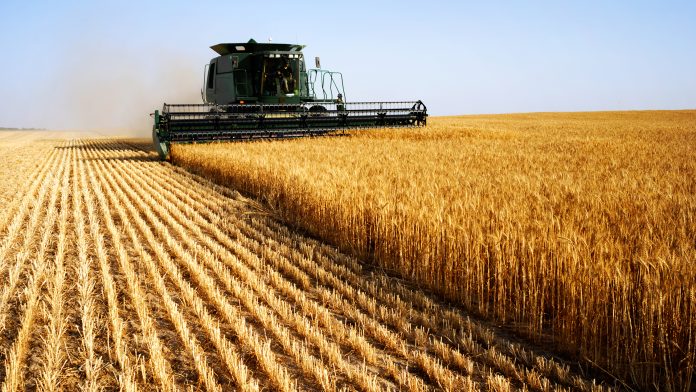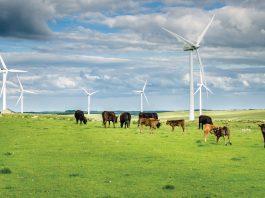Wolfgang Burtscher, Director General of the European Commission’s Directorate General for Agriculture and Rural Development explains some of the key ways in which the future Common Agriculture Policy (CAP) will create a sustainable Europe.
IN June 2018, the European Commission presented proposals for a future Common Agricultural Policy. The proposals aim to shift the policy’s emphasis towards results and performance, rather than compliance and rules. In addition, the proposals are built around creating a sustainable Europe with key priorities, such as: simplifying and modernising the Common Agricultural Policy and better responding to European agriculture’s emerging challenges at an economic, environmental, and social level, which are only reinforced by the current crisis arising from the COVID-19 outbreak.
The nine common objectives
Let me start with a key aspect of the proposals: The Common Agricultural Policy’s nine common objectives set at EU level. These objectives tackle economic, environmental, and social challenges. Ensuring fair income for farmers, preserving landscapes and biodiversity, rebalancing power in the food supply chain, climate change action – these are just a few examples. They are all crucial in ensuring that the policy continues to deliver and help the sector in tackling current and future challenges.
The Common Agricultural Policy strategic plans
These nine specific objectives feed into another key aspect of the proposals: the CAP strategic plans. Each Member State will have to produce a national strategic plan to explain how they will achieve the nine common objectives. The idea is for member states to analyse their situation and territory in terms of strengths, weaknesses, opportunities, and threats (SWOT analysis) and link it to their needs. Based on this analysis, Member States will explain how they will implement Common Agricultural Policy instruments to achieve these objectives. For the first time, Member States will have to develop a single strategic approach in the use of all Common Agricultural Policy instruments and ensure their synergies.
These two elements are the backbone of this proposal, allowing flexibility in the implementation of the Common Agricultural Policy while being driven by high EU level ambition.
Creating a sustainable Europe
The future Common Agricultural Policy sets higher ambition in terms of environment and climate change, as reflected in the policy objectives. Out of the nine objectives of the future Common Agricultural Policy, three relate to environmental and climate action:
- Contributing to climate change mitigation and adaptation, as well as sustainable energy;
- Fostering the sustainable development and efficient management of natural resources such as water, soil, and air; and
- Contributing to the protection of biodiversity, enhanced ecosystem services, and the preservation of our habitats and landscapes.
This sets a basis to ensure that Member States take on board environmental and climate action in the way that they will implement the CAP, which should be reflected in their national CAP strategic plans. To complement the objectives, the future CAP includes different tools that aim to increase the overall environmental performance of EU agriculture.
Enhanced conditionality
Among those, conditionality is an integral part of the future Common Agricultural Policy proposals, replacing the ‘greening’ and ‘cross-compliance’ of the current CAP. Conditionality links area and animal-based Common Agricultural Policy payments to a range of obligations. If beneficiaries do not meet the obligations, they will see their payments reduced.
The idea is to ensure that farmers adopt and maintain good farming practices and standards through these obligations. The obligations include good farming practices, called ‘Good Agricultural and Environmental Conditions’ (GAECs), for:
- Mitigating and adapting to climate change;
- Addressing water challenges;
- Soil protection and quality;
- Land management; and
- The protection and quality of biodiversity.
They are complemented by Statutory Management Requirements (SMRs), which links the Common Agricultural Policy to wider EU legislation that governs the environment, public health, animal health, plant health, and animal welfare. Conditionality will be mandatory for both member states to implement and for those receiving Common Agricultural Policy (CAP) payments to comply with.
Eco-schemes
In addition, the future CAP introduces a new system, the so-called ‘eco-schemes’, available under the direct payments framework. The eco-schemes aim to reward farmers for going even further in the implementation of sustainable agricultural practices, beyond the mandatory requirements set by conditionality. These practices could include the implementation of environmentally friendly production systems such as agroecology, agroforestry, and organic farming.
Mandatory for Member States to propose, the eco-schemes will be voluntary for farmers to join. Member states will design and choose to offer one or more eco-schemes based on local conditions and needs.
Environmental and climate management commitments
Finally, the rural development framework includes environmental and climate management commitments. Similarly, they aim to restore, preserve and enhance ecosystems, promote resource efficiency, and move towards a low-carbon and climate-resilient economy by compensating farmers and other beneficiaries for voluntarily committing themselves to implement sustainable practices.
Green architecture
All together, these elements compose the key elements of the ‘green architecture’ of the future CAP. Combined with the CAP strategic plans, this new green architecture will ensure that the CAP’s increased environmental and climate action ambition is adapted to local needs and conditions. This will be crucial in the transition towards a more sustainable system of agriculture.
Environmental degradation linked to agriculture
The future CAP offers key tools to ensure the adoption of sustainable farming practices across the EU. Tools such as eco-schemes and environmental and climate management commitments specifically aim at rewarding farmers for good environmental care, and for going beyond the mandatory baseline set by conditionality.
It is by implementing sustainable agriculture practices across the EU, promoting practices such as agroecology, agroforestry, organic farming and the use of precision farming, we will avoid further environmental degradation linked to agriculture. This is what the CAP is doing and will continue doing in the future.
The ‘European Green Deal’
Beyond the CAP, the European Commission’s environmental and climate aspirations have also been enshrined in the ‘European Green Deal’. Presented in December 2019, the Green Deal is a roadmap for making the EU’s economy sustainable by turning climate and environmental challenges into opportunities across all policy areas and making the transition just and inclusive for all.
The Farm to Fork strategy and the biodiversity strategy are the sections of the Green Deal that are particularly relevant for the agriculture sector. The biodiversity strategy for 2030 will set goals to protect the fragile natural resources of our planet.
The Farm to Fork strategy’s aim is to design a fair, healthy and more climate and environmentally friendly food system. The EU is currently renowned for a food system which produces food with some of the highest standards for nutrition, quality, and safety in the world. The Farm to Fork strategy will contribute to make it among the most sustainable.
It is important to remember the three dimensions of sustainability – environmental, social, and economic. If we want to achieve this transition, we will have to take all three into account, leaving no one behind. This is where the CAP can play a crucial role, as it is already contributing to the three dimensions. Our proposals are compatible with the Green Deal’s greater ambitions, thanks to its flexibility and new green architecture.
Market requirements
Since its creation, the CAP has evolved significantly to make it CAP compatible with market requirements. It was born in 1962, when the global and European context was very different. Europe was still recovering from the Second World War, and the main objective of the policy was to ensure food security for the continent.
This objective is still at the heart of the policy, and we have seen its absolute necessity during the on-going crisis which followed the outbreak of the coronavirus across the world. Our food supply chain has shown its resilience and ability to adapt to continue feeding EU citizens.
Nonetheless, priorities have shifted along the way. Among those, the CAP has become more market orientated to adapt to the global market and, consequently, has made EU agriculture more competitive. We are now again at a crossroads, current and future challenges need to be addressed, including climate change, biodiversity loss, and ensuring a fair income for farmers.
The Farm to Fork strategy, together with the future CAP, will support the transition towards sustainable EU food systems that are now more essential than ever to ensure that we are able to sustain food security in the medium and long term.
Innovation
Overall, agriculture will be a key partner in the move towards climate neutrality at EU level, and this cannot be done without the support of the CAP. For instance, farmers and foresters can contribute to the increase of carbon sequestration. In addition, technology and innovation have already started to change the agricultural landscape: from publicly available satellite data to precision farming tools, a more efficient use of natural resources is possible while improving production. However, innovation does not only include digital and technological advances. By improving our understanding of how nature and ecosystems work, of how plants, animals and trees interact, we can design more innovative, sustainable farming systems.
The European Commission will support the sector and its actors by making the right tools available but also by investing heavily in research and innovation to continue and further develop sustainable agricultural systems. Finally, the key step will be to make this knowledge widely available and accessible to all.
Wolfgang Burtscher
Director General
DG Agriculture and Rural Development
European Commission
Tweet @EUAgri
https://ec.europa.eu/info/food-farming-fisheries
Please note, this article will also appear in the second edition of our new quarterly publication.









